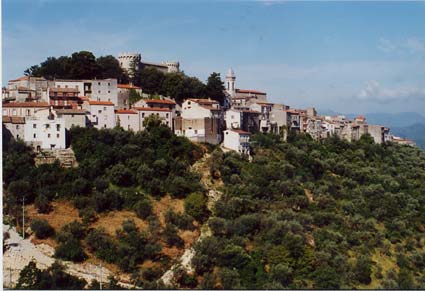![]() Castles
Castles
![]() Castle of Monteroduni
Castle of Monteroduni
 |
Castle of Monteroduni |
The
village (called Monteradone in the 12th century and Rocce
Radoboni and Monsrodunus a century later), located on the slopes of
Mount Altone near the river Volturno, was built to control the passage along the
ancient Via Latina and along the river.
In 964 it
was given to Count Landolfo. In 1064, at the death of Bernardo I and his sons,
who were killed in a battle against the Normans, it came into the hands of the
Counts of Molise. The village was destroyed by Moscaincervello, a follower of
Henry VI, before it passed into the hands of the Counts of Celano (1202) who
sided against Frederick II. In the following centuries it belonged to the
Ardicourt, Evoli and d’Angiò families (Giovanna I d’Angiò held Monteroduni
from 1345 to 1363).
The Pignatelli castle is of Longobard origin but was almost certainly
restructured in the Norman period when four corner towers were added. Today it
displays few of the characteristics of a military installation (ducts and
cisterns), especially after the transformations in the middle of the 16th
century when the entire building was modified for residential functions. Inside
the courtyard, which is not very large, a 16th century staircase
gives access to the upper floors and the main hall. The castle can also be
accessed through a porta falsa (false door), so called because it exposed
attackers to fire from the projecting turrets. Alongside the castle there is a
chapel dedicated to Saint Michael Archangel, which preserves the coat of arms of
the d’Angiò family, while another church of medieval origin (St. Mary in
Altissimis) is located a short distance from the village.